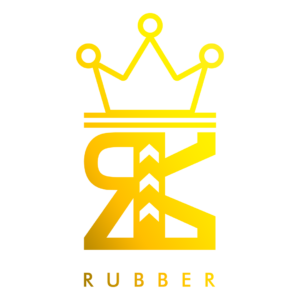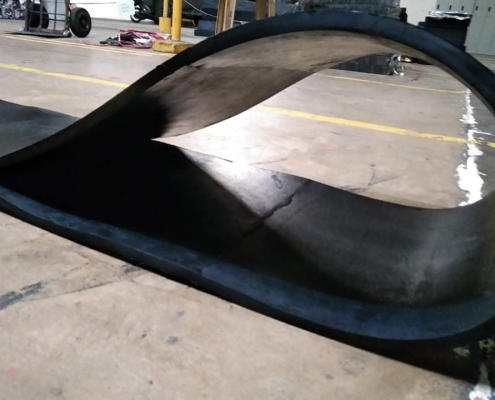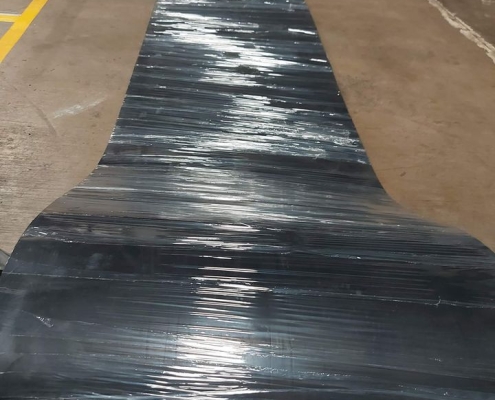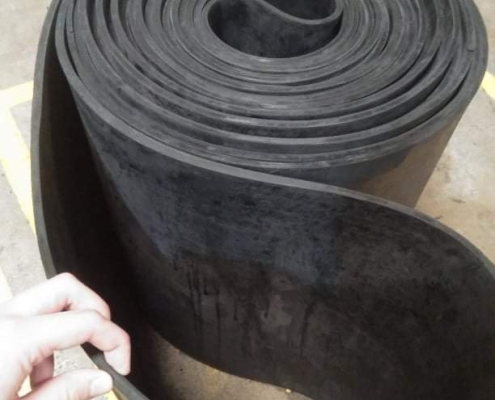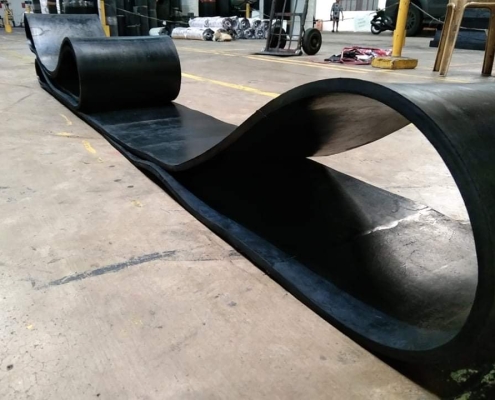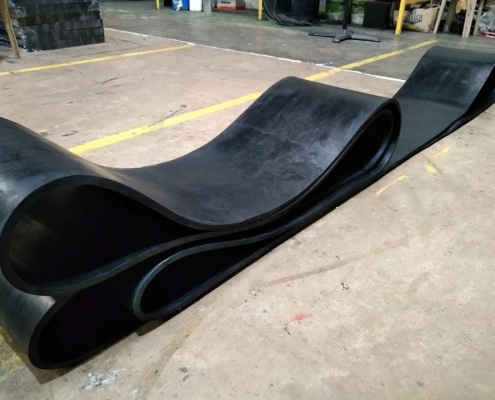Rubber Conveyor Belt
A rubber conveyor belt is typically used in warehouses, factories, and other industrial settings to transport items from one point to another. It is a belt that consists of a series of rubber belts connected side-by-side. These belts are thick, durable rubber material that can withstand high temperatures and heavyweight loads. They have a variety of shapes and sizes, ranging from thin, flat sheets that are typically used as the padding underneath shelves to thicker, round sheets used for making children’s play areas. Depending on the specification, it is made of high-grade rubber materials and comes in various colors like brown, grey, black, and many more.
How the Conveyor Belt Gets Power and Moves
There are many different types of belts, and these work based on the type of conveyor belt. The most common type is a flexible belt. It is made from rubber or other elastomers, and the power comes from an electric motor, which allows for variable speeds to occur quickly. The movement of the belt is often powered by a continuous loop of thermal plastic or wire rope driven by a cogwheel. It transports raw materials, finished goods, and other items from one point to another.
History of Rubber Conveyor Belts
The history of rubber conveyor belts can be traced back to their invention in the 19th century. The impact of rubber conveyor belts on the industrial revolution cannot be overstated. These belts revolutionized transportation and material handling, enabling industries to improve productivity and efficiency. Advancements in rubber conveyor belt technology have been significant over the years, with improvements in materials, design, and manufacturing techniques. This has led to increased load-carrying capacity, longer belt life, and reduced maintenance requirements. Additionally, advancements such as the introduction of modular belts and automated systems have further enhanced their versatility and adaptability across various industries.
However, it is important to consider the environmental impact of rubber conveyor belts. The production and disposal of these belts contribute to waste generation and resource consumption. Efforts have been made to address these concerns through recycling initiatives and the development of eco-friendly materials for belt production. Nonetheless, ongoing research is necessary to mitigate the environmental consequences associated with rubber conveyor belts while ensuring their continued contribution to industrial liberation.
Different Properties of Conveyor Belts
Different properties of conveyor belts can impact their performance and suitability for specific applications. Material compatibility is an important consideration when selecting a conveyor belt, as it determines whether the belt can handle the specific materials being transported without degrading or causing contamination. Tensile strength is another crucial property to consider, as it determines the maximum amount of tension that a belt can withstand without breaking or stretching excessively. The higher the tensile strength, the more durable and reliable the conveyor belt will be. Heat resistance is also an important property, especially in industries where high temperatures are present. A conveyor belt with good heat resistance will be able to withstand elevated temperatures without warping or losing its structural integrity. Considering these properties ensures that the chosen conveyor belt will perform optimally in its intended application and provide long-lasting reliability and efficiency.
Maintenance Tips for Rubber Conveyor Belts
Maintenance plays a crucial role in ensuring the longevity and optimal performance of rubber conveyor belts. Common issues that can arise with these belts include wear and tear, belt misalignment, material spillage, and belt slippage. To troubleshoot these issues, it is important to regularly inspect the belts for any signs of damage or excessive wear. Belt alignment should be checked to ensure proper tracking and prevent potential damage. Material spillage can be minimized by adjusting loading points and installing effective containment systems. Belt slippage can be addressed by checking tension levels and adjusting them accordingly.
Best practices for maintenance include establishing a regular inspection schedule, conducting thorough cleaning of the belts, using appropriate lubrication techniques, and promptly addressing any identified issues. By following these guidelines, conveyor belt users can optimize their performance while minimizing downtime and costly repairs.
Benefits and What does it do?
It is used mainly to transport heavy objects and irregularly shaped materials. Rubber belts should be replaced if they have been cut, torn, or damaged in any way.
- Controls the movement of products along the conveyor belt.
- It prevents the product from jamming, bouncing off the belt, or getting stuck in pockets.
- Reduces injury by allowing for smooth movements.
- Allows for optimal running conditions because it reduces friction. It is made of TPU (thermoplastic polyurethane), durable and flexible to provide high-quality control.
- Rubber conveyor belts are long-lasting and cost-effective.
- Due to its toughness, conveyor-belt rubber lasts at least twice as long as conventional conveyor belts. Consequently, purchasing replacements offer more savings than using regular conveyor belts.
- Rubber is more flexible than traditional belts, so it can handle the extreme changes in temperature that often occur during the processing of food products.
- It also has a higher tear strength, which prevents it from deteriorating come contact with sticky substances.
- It can be used for industrial pulverizing, plasticizing, mixing, drying, extruding, and many other industrial processes.
Frequently Asked Questions
What Are the Common Applications of Rubber Conveyor Belts?
Common applications of conveyor belts include transportation of goods in industries such as mining, agriculture, and manufacturing. The width and length of the belt are determined by factors like load capacity and space availability.
How Do You Determine the Appropriate Width and Length of a Rubber Conveyor Belt?
The appropriate width and length of a conveyor belt is determined by considering factors such as belt tension, the specific conveyor system, and proper belt tracking to ensure efficient and safe operation.
What Are the Key Factors to Consider When Selecting a Rubber Conveyor Belt for Specific Industries?
When selecting a rubber conveyor belt for specific industries, factors and considerations come into play. These may include the type of material being conveyed, operating conditions, required belt strength and flexibility, as well as industry-specific regulations and standards.
Are There Any Safety Precautions or Guidelines to Follow When Operating Rubber Conveyor Belts?
Safety precautions and guidelines are essential when operating conveyor belts. Proper training, regular maintenance, and adherence to safety protocols minimize the risk of accidents. Troubleshooting techniques and maintenance tips ensure smooth operation and prevent downtime.
How Can You Prevent Common Issues Like Belt Slippage or Material Spillage When Using Rubber Conveyor Belts?
To prevent common issues like belt slippage or material spillage, one must ensure proper belt tension, implement effective belt tracking systems, and regularly clean the belt surface. These measures contribute to the smooth operation of rubber conveyor belts.
Conclusion
In conclusion, a rubber conveyor belt is an amazing invention used in many industries worldwide. These belts come in various sizes and can be made to fit your exact needs. They are durable, and you won’t have to worry about these belts breaking down after a few weeks of use either. They will last for years and consistently deliver the same results every time. You can also purchase rubber conveyor belts with different characteristics such as waterproof or those that feature shock-absorbing properties. Rubber belts are strong, durable, and versatile.
If you’re curious about the function of a rubber conveyor belt in your industry, please get in touch with us!
Below are some of the actual products and applications.
